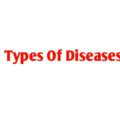Childhood disease and disorder, refers to any illness, impairment, or abnormal condition that affects primarily infants and children i.e., those in the age span that begins with the fetus and extends through adolescence. Childhood is a period typified by change, both in the child and in the immediate environment. Child killer diseases account for a significant percentage of global child mortality rates. Since 1990, the global under-5 mortality rate has dropped by 59%, from 93 deaths per 1,000 live births in 1990 to 39 in 2018. This is equivalent to 1 in 11 children dying before reaching age 5 in 1990, compared to 1 in 26 in 2017. Nevertheless, a vast majority of deaths still occur in developing countries like Nigeria. The vision of Expanded Programme on Immunization in Nigeria is to improve the health of Nigerian children by eradicating all the six killer diseases.
Recent reports from Nigeria indicates that, pneumonia has replaced malaria as the number one killer of children under five, claiming 18% of all under-five death. According to the WHO, there were 148,772 under-five deaths due to pneumonia in Nigeria in 2004, falling slightly to 132,556 in 2015.
The 6 child killer diseases
Despite being entirely preventable and treatable, common infectious diseases are still killing young children in large numbers. Pneumonia, diarrhoea and malaria were responsible for approximately 29 per cent of global deaths among children under the age of 5 in 2018. Children in the world’s poorest regions are disproportionately affected, with infectious diseases particularly prevalent in sub-Saharan Africa. The 6 child killer diseases are;
Pneumonia
Pediatric pneumonia is responsible for the deaths of more than 800,000 young children worldwide each year, according to the United Nations Children’s Fund (UNICEF). These deaths occur almost exclusively in children with underlying conditions, such as chronic lung disease of prematurity, congenital heart disease, and immunosuppression. Although most fatalities occur in developing countries, pneumonia remains a significant cause of morbidity in industrialized nations.
Pneumonia caused by bacterial infections can last 1 to 2 weeks with appropriate antibiotics. In general, symptoms should improve about a week after starting antibiotics. Because there are no medications to treat viral infections, symptoms from viral pneumonia may last longer. Most cases of pneumonia are caused by common viruses that cause cold, flu and other respiratory infections such as adenovirus, rhinovirus, influenza (flu), respiratory syncytial virus (RSV) and parainfluenza virus.
The viruses and bacteria that cause pneumonia are contagious and are spread by sneezing, coughing or contact with contaminated surfaces like shared drinking glasses or utensils, used tissues or even doorknobs and faucets. However, a person who becomes infected by someone with pneumonia will not necessarily develop pneumonia themselves.
Diarrhoea Diseases
Diarrhoeal disease is the second leading cause of death in children under five years old, and is responsible for killing around 525 000 children every year. Diarrhoea can last several days, and can leave the body without the water and salts that are necessary for survival. In the past, for most people, severe dehydration and fluid loss were the main causes of diarrhoea deaths. Now, other causes such as septic bacterial infections are likely to account for an increasing proportion of all diarrhoea-associated deaths. Children who are malnourished or have impaired immunity as well as people living with HIV are most at risk of life-threatening diarrhoea.
Diarrhoea is defined as the passage of three or more loose or liquid stools per day (or more frequent passage than is normal for the individual). Frequent passing of formed stools is not diarrhoea, nor is the passing of loose, “pasty” stools by breastfed babies. Diarrhoea is usually a symptom of an infection in the intestinal tract, which can be caused by a variety of bacterial, viral and parasitic organisms. Infection is spread through contaminated food or drinking-water, or from person-to-person as a result of poor hygiene.
Interventions to prevent diarrhoea, including safe drinking-water, use of improved sanitation and hand washing with soap can reduce disease risk. Diarrhoea should be treated with oral rehydration solution (ORS), a solution of clean water, sugar and salt. In addition, a 10-14 day supplemental treatment course of dispersible 20 mg zinc tablets shortens diarrheoa duration and improves outcomes. There are three clinical types of diarrhoea:
- acute watery diarrhoea – lasts several hours or days, and includes cholera;
- acute bloody diarrhoea – also called dysentery; and
- persistent diarrhoea – lasts 14 days or longer.
Malaria
Most of the 1-3 million who die each year from malaria are children, mainly in Africa, which is hyperendemic for malaria. In older children, malaria has a similar course as in adults. However, in children below the age of 5 years, particularly infants, the disease tends to be atypical and more severe. In the first two months of life, children may not contract malaria or the manifestations may be mild with low-grade parasitemia, due to the passive immunity offered by the maternal antibodies.
In endemic and hyperendemic areas, the parasite rate increases with age from 0 to 10% during first three months of life to 80 to 90% by one year of age and the rate persists at a high level during early childhood. The mortality rate is highest during the first two years of life. By school age, a considerable degree of immunity would have developed and asymptomatic parasitemia can be as high as 75% in primary school children. In Africa, on an average about 1 in 20 children die from malaria, and in worst affected areas, even 1 in 5 or 6 die from malaria and its related diseases (e.g., anemia).
In areas of low endemicity, where the immunity is low, severe infection occurs in all age groups including adults. The morbidity and mortality due to malaria in children tends to be very high in these areas. In high transmission areas, partial immunity to the disease is acquired during childhood. In such settings, the majority of malarial disease, and particularly severe disease with rapid progression to death, occurs in young children without acquired immunity. Severe anaemia, hypoglycemia and cerebral malaria are features of severe malaria more commonly seen in children than in adults.
Meningitis
Meningococcal meningitis can affect anyone of any age, but mainly affects babies, preschool children and young people. The disease can occur in a range of situations from sporadic cases, small clusters to large epidemics throughout the world, with seasonal variations. Geographic distribution and epidemic potential differ according to serogroup. The largest burden of meningococcal meningitis occurs in the meningitis belt, an area of sub-Saharan Africa, which stretches from Senegal in the west to Ethiopia in the east.
Meningitis is a serious infection of the meninges, the membranes covering the brain and spinal cord. It is a devastating disease and remains a major public health challenge. The disease can be caused by many different pathogens including bacteria, fungi or viruses, but the highest global burden is seen with bacterial meningitis. Several different bacteria can cause meningitis. Streptococcus pneumoniae, Haemophilus influenzae, Neisseria meningitidis are the most frequent ones. N. meningitidis, causing meningococcal meningitis, is the one with the potential to produce large epidemics. There are 12 serogroups of N. meningitidis that have been identified, 6 of which (A, B, C, W, X and Y) can cause epidemics. N. meningitidis can cause a variety of diseases. Invasive meningococcal disease (IMD) refers to the range of invasive diseases caused by N. meningitidis, including septicemia, arthritis and meningitis. Similarly, S. pneumoniae causes other invasive diseases including otitis and pneumonia. Overall mortality for bacterial meningitis is 5-10% and varies according to the causative organism and the patient’s age. In neonates, mortality is 15-20%, whereas in older children, it is 3-10%.
HIV
Although human immunodeficiency virus (HIV) and acquired immune deficiency syndrome (AIDS) originally emerged as adult health problems, they have become a major killer of under-5-year-old children, especially in developing countries. Children of HIV-seropositive mothers can acquire the virus directly through vertical transmission; about 25–30% of children born to infected mothers become infected with HIV and almost all of them die before 5 years of age in most developing countries with high HIV prevalence. Thus, under-5 mortality rates among children of HIV-infected mothers are two to five times higher than those among children of HIV-negative mothers.
The Joint United Nations Programme on HIV/AIDS (UNAIDS) estimated that by 1996, a cumulative total of about 3 million children had been infected with HIV worldwide and that most of them had died. Since then, many more children are believed to have died as a result of HIV infection and other AIDS-related problems.
According to UNAIDS estimates, about 14 million women of childbearing age currently live with HIV/AIDS in the world, giving birth to children with an elevated risk of HIV infection and death before the age of 5 years. Even among children who are not infected, many will die because the resources needed to ensure their survival and health are used to care for HIV seropositive adults. Adult HIV prevalence and under-5 mortality rates therefore seem to have increased or stagnated in many countries. A recent World Bank report suggests that life expectancy at birth in countries with a high HIV-prevalence, such as Botswana, Zambia and Zimbabwe, is lower in 2000 than it was in 1975.
Although 14 million lives have already been lost to HIV/AIDS, it is estimated that only 10% of the total impact of illness and death from the pandemic has been seen so far. One of the concerns is whether the effects of the epidemic will, as some fear, reverse the substantial child survival gains that have resulted from huge international efforts over the past decades in several developing countries. The objective of the present study was to use available data to monitor trends in under-5 mortality in countries with different levels of adult HIV prevalence and estimate how much of the observed under-5 mortality rate is attributable to the prevalence of HIV among adults.
Measles
Measles is a highly contagious viral disease. It remains an important cause of death among young children globally, despite the availability of a safe and effective vaccine. Under the Global Vaccine Action Plan, measles and rubella are targeted for elimination in five WHO Regions by 2020. WHO is the lead technical agency responsible for coordination of immunization and surveillance activities supporting all countries to achieve this goal.
Measles is transmitted via droplets from the nose, mouth or throat of infected persons. Initial symptoms, which usually appear 10–12 days after infection, include high fever, a runny nose, bloodshot eyes, and tiny white spots on the inside of the mouth. Several days later, a rash develops, starting on the face and upper neck and gradually spreading downwards.
Severe measles is more likely among poorly nourished young children, especially those with insufficient vitamin A, or whose immune systems have been weakened by HIV/AIDS or other diseases. The most serious complications include blindness, encephalitis (an infection that causes brain swelling), severe diarrhoea and related dehydration, and severe respiratory infections such as pneumonia. Routine measles vaccination for children, combined with mass immunization campaigns in countries with low routine coverage, are key public health strategies to reduce global measles deaths.
While vaccination has drastically reduced global measles deaths, a 73% drop between 2000-2018 worldwide, measles is still common in many developing countries, particularly in parts of Africa and Asia. More than 140,000 people died from measles in 2018. The overwhelming majority (more than 95%) of measles deaths occur in countries with low per capita incomes and weak health infrastructures. The measles vaccine has been in use since the 1960s. It is safe, effective and inexpensive.






